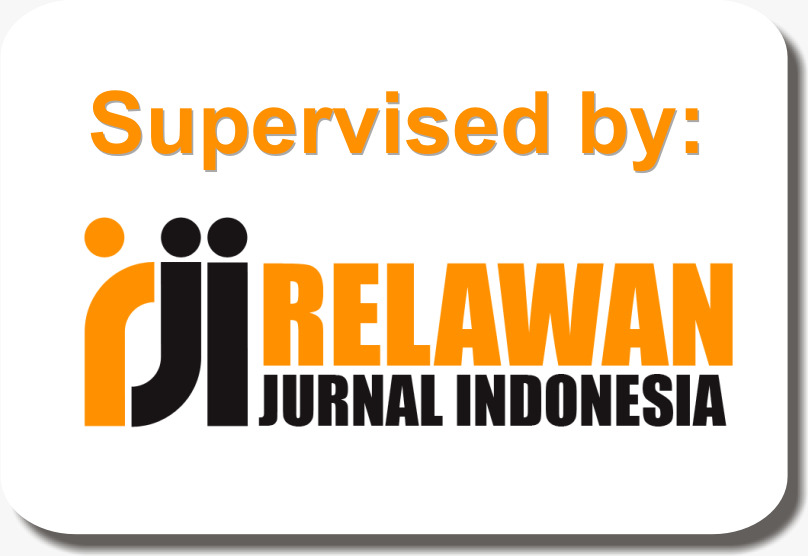Penerapan Agglomerative Hierarchical Clustering Untuk Segmentasi Pelanggan
Abstract
As more businesses emerge, companies need to have the right marketing strategy to provide the best service to customers. The first step is to know the type of customer and make appropriate marketing strategies according to the type of customer. In this research, it is proposed for clustering customers so that an appropriate strategy for that customer group can be determined. The method used for cluster formation uses Agglomerative Hierarchical Clustering with Average Linkage approach and distance determination using Manhattan Distance. The variables in this research are Recency, Frequency, and Monetary (RFM). The results of testing using the Silhouette coefficient show that the results of 7 clusters are the best results when compared with 2 clusters up to 20 clusters because they have the smallest minus value. Based on the results of the Silhoutte coefficient, customer segmentation uses 7 clusters with each cluster representing the existing customer type.
Keywords
Full Text:
PDFReferences
Effendi, A. L. (2015). Segmentasi Konsumen Sayuran Organik Pada Yogya Dept. Store Kota Bandung Tahun 2014. Jurnal Telekomunikasi, Bisnis Informatika, Dan Manajemen, 2(1), 10–17.
Everitt, B. S., Landau, S., Leese, M., & Stahl, D. (2011). Cluster Analysis (5th Editio). The Atrium, Southern Gate, Cichester, West Sussex, P019 8SQ: John Wiley & Son.
Greenberg, J., & Baron, J. A. (2010). Behavior in Organizations: Understanding and Managing The Human Side of work. New Jersey: Pearson Education International.
Hardiani, T., Sulistyo, S., & Hartanto, R. (2015). Segmentasi Nasabah Tabungan Menggunakan Model RFM (Recency, Frecuency, Monetery) dan K-Means pada Lembaga Keuangan Mikro. In Seminar Nasional Teknologi Informasi dan Komunikasi Terapan (SEMANTIK),.
Kurniawan, A. A. (2017). Implementasi Algoritma Agglomerative Hierarchical Clustering Untuk Mengelompokkan Capaian Belajar Siswa SD. Universitas Sanata Dharma.
Laeli, S. (2014). Analisis Cluster dengan Average Linkage Method dan Ward’s Method untuk Data Responden Nasabah Asuransi Jiwa Unit Link. Universitas Negeri Yogyakarta.
Lubis, A. H. (2016). Model Segmentasi Pelanggan Dengan Kernel K-Means Clustering Berbasis Customer Relationship Management. Sinkron, 1(1).
Prasetyo, E. (2012). Data Mining : Konsep dan Aplikasi Menggunakan Matlab. Yogyakarta: Andi.
Rainer, R. K., & Cegielski, C. G. (2011). Introduction to Information Systems:Enabling and Transforming Business (3rd Editio). USA: John Wiley & Sons.
Sulistyowati, Ketherin, B. E., Arifiyanti, A. A., & Sodik, A. (2018). Analisa Segmentasi Konsumen Menggunakan Algoritma K-Means Clustering. In Seminar Nasional Sains dan Teknologi Terapan: Pendekatan Multidisiplin Menuju Teknologi dan Industri yang Berkelanjutan (pp. 51–58). Surabaya: Institut Teknologi Adhi Tama Surabaya.
Vulandari, R. T. (2017). Data Mining. Yogyakarta: Gava Media.
Wulandari, G. F. (2014). Segmentasi Pelanggan Menggunakan Algoritma K-Means Untuk Customer Relationship Management (CRM) pada Miulan Hijab. Universitas Dian Nuswantoro.
DOI: http://dx.doi.org/10.30646/sinus.v18i1.448
Refbacks
- There are currently no refbacks.
STMIK Sinar Nusantara
KH Samanhudi 84 - 86 Street, Laweyan Surakarta, Central Java, Indonesia
Postal Code: 57142, Phone & Fax: +62 271 716 500
Email: ejurnal @ sinus.ac.id | https://p3m.sinus.ac.id/jurnal/e-jurnal_SINUS/
ISSN: 1693-1173 (print) | 2548-4028 (online)

This work is licensed under a Creative Commons Attribution-NonCommercial-ShareAlike 4.0 International License.














